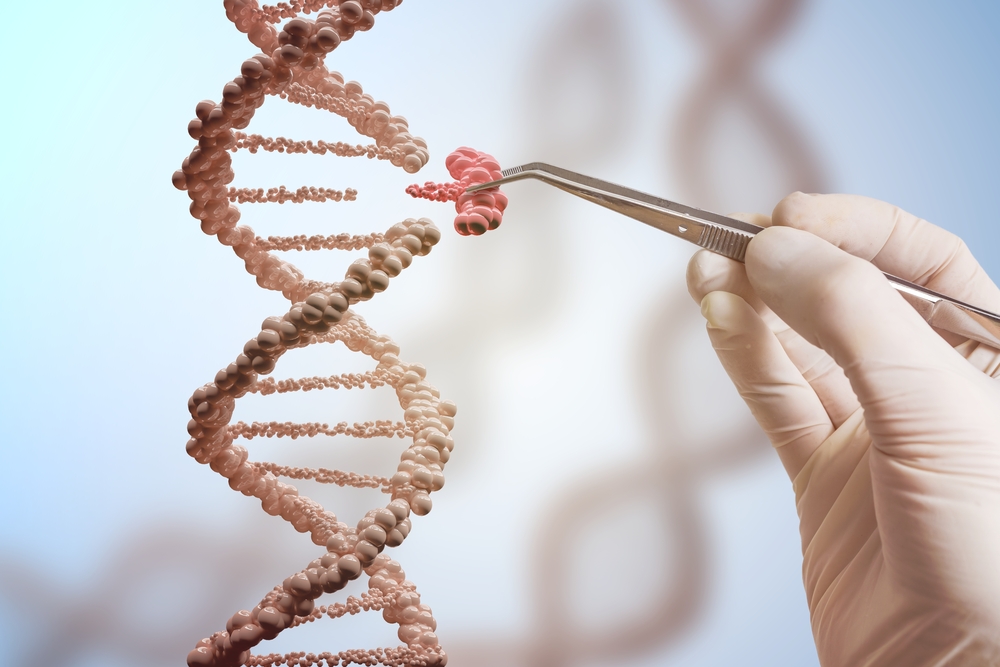Researchers Use Artificial Chromosomes to Deliver Gene Therapy for DMD

European and Japanese researchers used an artificial chromosome to generate the dystrophin protein that’s missing in Duchenne muscular dystrophy.
The chromosome delivered a two-gene package capable of producing the missing protein to a mouse model of the disease. The team also used it in a lab setting involving human cells. Researchers said the strategy could lead to new Duchenne MD therapies.
Their study in the journal EMBO Molecular Medicine is titled “Reversible immortalisation enables genetic correction of human muscle progenitors and engineering of next‐generation human artificial chromosomes for Duchenne muscular dystrophy.”
Scientists are developing gene therapies to try to treat a number of diseases. This involves replacing or sidestepping faulty genes or correcting processes that lead to the mutations.
Effective gene therapies for Duchenne MD face two major obstacles. One is that the dystrophin gene is large, so finding a way to deliver it to the muscle cells where it is needed is not easy. The other obstacle is the sheer number of deteriorating muscle cells that need to be repaired.
Scientists have developed a replacement gene delivery mechanism called human artificial chromosomes that can carry bigger genes like dystrophin.
In a previous study, a group of researchers used stem-cell-like mesoangioblasts to generate the dystrophin protein that was missing in a mouse model of Duchenne MD. They did this by delivering a functional human dystrophin gene to the mice. The delivery vehicle was human artificial chromosomes, or HACs.
The therapy led to the mice developing muscle fibers and muscle satellite cells. It also led to pronounced improvements in the animals’ symptoms that lasted up to eight months.
The study, “Stem cell-mediated transfer of a human artificial chromosome ameliorates muscular dystrophy,” appeared in the journal Science Translational Medicine.
“These results provided the first evidence of safe and efficacious pre-clinical [pre-clinical-trial] gene replacement therapy with a HAC into an animal model of a genetic disease, paving the way for translating HAC gene transfer to human cells,” the researchers wrote.
But mouse and human cells have different rates of multiplication, or — in scientists’ term — proliferation. For gene therapy to work in people with muscle deterioration, human muscle cells are likely to need their proliferation potential boosted.
The European-Japanese team decided to try a new approach to muscle cell gene therapy. It focused on precursor cells that develop into muscle cells later.
A challenge was healthy human mesoangioblasts’ limited ability to proliferate. The team used a non-infectious virus, called a lentivirus, to deliver two genes to the precursor cells. One gene is associated with the telomerase enzyme, which is known to prolong cell life. The other is a protective gene that prevents cells from developing cancer.
When researchers delivered the genes to mice with Duchenne MD, the animals were developing muscle fiber within three weeks.
The bottom line was that the team advanced chromosome engineering by developing a new virus delivery system that can generate the dystrophin protein that’s missing in Duchenne MD and control cells’ death.
“To our knowledge, this novel HAC represents the largest and possibly most complex gene therapy vector [delivery system] developed to date,” the researchers wrote.
Their approach led to “genetic correction of clinically relevant, human skeletal muscle-derived progenitors [precursor cells] for gene and cell therapy,” they wrote. Within a month, the level of precursor cells had jumped from a limited range to “a number of cells potentially sufficient to treat a DMD pediatric patient.”
“These exciting results are a world-first and leading-edge science,” George Dickson, a professor at Royal Holloway-University of London, said in a news release. “Production of an artificial human chromosome containing an intact healthy copy of the gene affected in DMD [Duchenne MD] is a tremendous feat of genetic engineering, and we are very proud to have played our part,” said Dickson, the author of the study. “This achievement is a first step towards a chromosome transfer therapy for this debilitating illness.”






